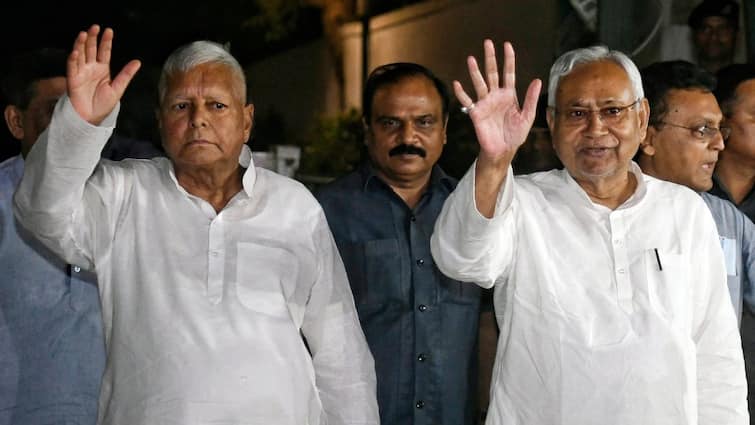The Bihar Assembly elections of 2015 and 2020 tell the story of how dramatically political equations can shift within just five years. From a united opposition toppling the BJP-led alliance in 2015 to a resurgent BJP emerging dominant within the same coalition in 2020, the state’s politics has remained a revolving door of alliances and rivalries.
In 2015, the Mahagathbandhan (Grand Alliance) of RJD, JD(U) and Congress swept the polls, winning 178 out of 243 seats. The win was seen as a decisive rejection of the BJP’s campaign narrative, with Nitish Kumar returning as Chief Minister and Lalu Prasad Yadav’s RJD taking the lead with 80 seats. The JD(U) secured 71, while the BJP-led NDA was reduced to just 58 seats.
But the harmony didn’t last long. In 2017, Nitish Kumar broke ranks with the RJD over corruption charges and crossed back to the BJP-led NDA, reshaping the power landscape once again.
By 2020, the state witnessed a completely different picture. The NDA, comprising BJP, JD(U), HAM(S) and VIP, returned to power, but with a reversed hierarchy. The BJP emerged stronger with 74 seats, while the JD(U) fell sharply to 43, marking Nitish’s weakest showing in years. The RJD, led by Tejashwi Yadav, became the single-largest party with 75 seats, signalling a generational shift in opposition leadership.
Smaller players also reshaped the battlefield. Chirag Paswan’s LJP cut into JD(U)’s vote base, the Left parties rose from 3 seats in 2015 to 16 in 2020, and AIMIM made an entry in Seemanchal, winning 5 seats, though four of its MLAs later joined the RJD.
Though Nitish Kumar retained the top post, the centre of gravity within the NDA shifted decisively towards the BJP, a trend that continues to define Bihar’s current political dynamics.
Key Takeaways
Bihar’s political landscape has witnessed a series of dramatic realignments over the past decade. In 2015, the RJD–JD(U)–Congress alliance handed a decisive defeat to the BJP-led NDA, marking a powerful comeback for the Mahagathbandhan. However, by 2017, Chief Minister Nitish Kumar broke away from the RJD and rejoined the NDA, reshaping the balance of power in the state.
The 2020 Assembly elections marked another turning point , the BJP emerged as the dominant force within the NDA, overtaking the JD(U) and shifting Bihar’s power dynamics. The realignments continued, with Nitish Kumar switching sides again in 2022, rejoining the RJD-Congress alliance. Yet, his political repositioning didn’t stop there ,in 2023, he once again left the Mahagathbandhan to return to the NDA fold ahead of the Lok Sabha elections, reaffirming his reputation as one of India’s most unpredictable political players.
Future Outlook
As Bihar gears up for the 2025 Assembly elections, the stakes are higher than ever for all major parties. The BJP will aim to consolidate its growing influence and strengthen its organisational network across the state. The RJD, under Tejashwi Yadav’s leadership, is determined to reclaim lost ground and reconnect with its core voter base. Meanwhile, Nitish Kumar remains the ultimate wildcard, with his history of shifting alliances keeping both camps wary.

